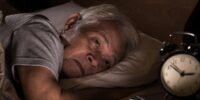What Is Sleepwalking and How to Prevent Dangerous Episodes

Sleepwalking, a parasomnia characterized by complex behaviors performed during sleep, poses potential risks and hazards to individuals who experience it. This article aims to provide an objective overview of sleepwalking, focusing on its scientific underpinnings, common triggers, and recognizable signs.
Furthermore, safety measures to prevent sleepwalking accidents will be discussed, as well as the importance of seeking professional assistance for individuals suffering from sleepwalking disorders.
By adhering to an academic approach, this article aims to deliver impartial information to enhance understanding and promote preventive measures.
Key Takeaways
- Sleepwalking is caused by disruptions in normal sleep architecture and abnormalities in the central nervous system.
- Common triggers for sleepwalking include stress, sleep deprivation, certain medications, and genetic factors.
- Recognizing the signs of sleepwalking, such as vacant expressions and purposeless movements, can help identify episodes.
- Safety measures to prevent sleepwalking accidents include creating a safe bedroom environment, installing safety gates, securing windows and doors, and tailoring safety measures to individual sleepwalking patterns.
The Science Behind Sleepwalking
The phenomenon of sleepwalking has been studied extensively, and research has uncovered several factors that contribute to the occurrence of sleepwalking episodes. One such factor is sleep architecture. Sleep is divided into several stages, including non-rapid eye movement (NREM) and rapid eye movement (REM) sleep. Sleepwalking typically occurs during NREM sleep, specifically during the transition from deep sleep to lighter stages of sleep. This suggests that disruptions in the normal sleep architecture may predispose individuals to sleepwalking.
Another significant factor that contributes to sleepwalking is neurological causes. Studies have shown that abnormalities in the central nervous system, such as an imbalance in neurotransmitters or dysfunction in specific brain regions, may play a role in sleepwalking. For example, dysfunction in the frontal lobe, which is responsible for executive functions and behavior regulation, has been associated with an increased likelihood of sleepwalking. Additionally, conditions such as epilepsy and certain medications that affect the central nervous system have been linked to sleepwalking episodes.
Understanding these neurological causes is crucial for developing effective prevention and treatment strategies for sleepwalking.
Common Triggers for Sleepwalking
Common triggers for episodes of sleepwalking include:
- Stress
- Sleep deprivation
- Certain medications
- Genetic factors
Sleepwalking causes are not fully understood, but these triggers are known to increase the likelihood of sleepwalking episodes.
Stress can disrupt normal sleep patterns and lead to sleepwalking, while sleep deprivation can alter the brain’s ability to regulate sleep and wake cycles, increasing the chance of sleepwalking.
Certain medications, such as sedatives or hypnotics, can also contribute to sleepwalking episodes.
Additionally, genetic factors may play a role in sleepwalking, as it tends to run in families.
To prevent sleepwalking, it is important to:
- Manage stress levels
- Prioritize sufficient sleep
- Avoid medications that can trigger episodes
Creating a safe sleep environment, such as removing obstacles and installing safety measures, can also help prevent potential injuries during sleepwalking episodes.
Recognizing the Signs of Sleepwalking
Recognizing signs of sleepwalking involves identifying specific behaviors and actions exhibited during episodes. While sleepwalking can occur in individuals of all ages, it is more common in children, with studies estimating a prevalence of 10-30%. To aid in recognizing sleepwalking, here are three key signs to look out for:
- Incomplete or non-responsive behavior: Sleepwalkers often exhibit a vacant or dazed expression, with minimal or no response to external stimuli. They may appear disoriented and unaware of their surroundings.
- Aimless wandering: Sleepwalkers tend to engage in purposeless movements, such as walking in a slow and clumsy manner. They may also perform repetitive actions, such as opening and closing doors or rearranging objects.
- Limited or absent memory: Upon awakening, sleepwalkers typically have no recollection of their sleepwalking episode. They may exhibit confusion and have difficulty recalling their actions during the episode.
Understanding these signs can help in identifying sleepwalking episodes, and further research is needed to unravel the causes of sleepwalking and develop effective preventive measures.
Safety Measures to Prevent Sleepwalking Accidents
Implementing safety measures can significantly reduce the risk of accidents associated with sleepwalking. Creating a safe bedroom environment is crucial in preventing injuries during sleepwalking episodes. This can be achieved by removing any potential hazards such as sharp objects, clutter, or furniture with sharp edges. Placing safety gates at the top of stairs can also prevent falls. Additionally, ensuring that windows and doors are securely locked can prevent sleepwalkers from wandering outside and getting lost or injured. It is important to note that safety measures should be tailored to the individual’s specific sleepwalking patterns and behaviors. In some cases, sleepwalking medication may be prescribed by a healthcare professional to help manage and reduce the frequency of sleepwalking episodes.
| Safety Measures | Description |
|---|---|
| Remove hazards | Eliminate sharp objects, clutter, and furniture edges. |
| Install safety gates | Place at the top of stairs to prevent falls. |
| Secure windows and doors | Lock to prevent sleepwalkers from wandering outside. |
| Sleepwalking medication | Prescribed by healthcare professionals to manage episodes. |
Seeking Professional Help for Sleepwalking Disorders
Seeking professional help for sleepwalking disorders can provide individuals with guidance and treatment options to address their specific symptoms and improve their overall sleep quality. Here are three common options that professionals may recommend:
- Medication options: In some cases, healthcare providers may prescribe medication to manage sleepwalking episodes. Medications such as benzodiazepines or antidepressants may be used to reduce the frequency and intensity of sleepwalking episodes. However, it is important to note that medication should be used under the supervision of a healthcare professional.
- Cognitive behavioral therapy (CBT): CBT is a widely used therapeutic approach that can help individuals manage their sleepwalking episodes. This therapy focuses on identifying and modifying the thoughts and behaviors that contribute to sleepwalking. CBT techniques may include keeping a sleep diary, implementing relaxation techniques, and developing a consistent sleep schedule.
- Sleep hygiene practices: Professionals may also provide guidance on practicing good sleep hygiene. This involves adopting healthy sleep habits such as maintaining a regular sleep schedule, creating a conducive sleep environment, and avoiding stimulants before bedtime.
Frequently Asked Questions
Is Sleepwalking More Common in Children or Adults?
Prevalence rates of sleepwalking vary between children and adults, with higher rates observed in childhood. Underlying causes include genetic factors, sleep deprivation, and certain medications. Further research is needed to fully understand the factors contributing to sleepwalking in different age groups.
Can Certain Medications or Substances Trigger Sleepwalking Episodes?
Medication side effects and substance abuse have been identified as potential triggers for sleepwalking episodes. Identifying the potential risks associated with these factors can help in preventing dangerous episodes of sleepwalking.
Are There Any Specific Sleep Disorders That Are Commonly Associated With Sleepwalking?
Sleep disorders such as REM sleep behavior disorder, sleep apnea, and narcolepsy have been associated with episodes of sleepwalking. These conditions may contribute to the causes of sleepwalking, although further research is needed to fully understand the relationship.
Can Sleepwalking Be Dangerous for the Person Experiencing It?
Sleepwalking poses potential risks to individuals, as they may engage in dangerous behaviors while asleep. Implementing effective sleepwalking prevention techniques, such as maintaining a regular sleep schedule and creating a safe sleep environment, can help reduce the occurrence of dangerous episodes.
Is It Possible for Someone to Remember Their Sleepwalking Episodes?
Sleepwalking is a parasomnia characterized by complex motor behaviors during sleep. While individuals typically have no memory of their sleepwalking episodes, some may recall fragments of their actions. Various factors, such as stress, sleep deprivation, and medications, can trigger sleepwalking.









